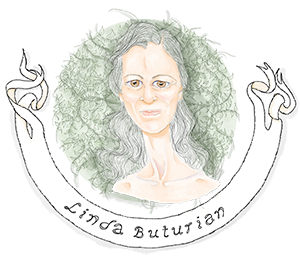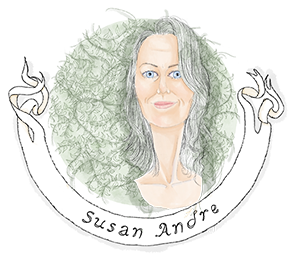About the Creative Team and Acknowledgements
About the Creative Team | The Changing Story
Acknowledgements
For monetary, institutional, and visionary support, without whom this book would not be possible, I am grateful to the University of Minnesota (U of M) College of Education and Human Development (CEHD), as well as to my department, Postsecondary
Teaching and Learning (PsTL), specifically:
- Jean Quam (Dean)
- David Ernst (Chief Information Officer)
- Sheila Hoover (Former Assistant Director of Academic Technology Services)
- Amy Lee (Professor and Department Chair of PsTL)
Thank you to my colleagues and staff in PsTL for learning with me and sharing your wisdom and teaching experiences:
David Arendale, Molly Rojas Collins, Kris Cory, Margaret Delehanty, Dan Detzner, Annette Digre, Heather Dorsey, Irene Duranczyk, Jennifer Franko, Tina Frederickson, LeRoy Gardner, Tabitha Grier-Reed, KC Harrison, Jay Hatch, Jeanne Higbee, Barbara
Hodne, Leon Hsu, Ezra Hyland, Patricia James, Rashne Jehangir, Murray Jensen, Suzanne Loch, Tania Mitchell, Gary Peter, Kathryn Phillips, Robert Poch, Doug Robertson, Sue Staats, Jason Stahl, Barry Stehlik, Mike Stebleton, Janet Stottlemyer,
Jill Trites, Catherine Wambach, Rhiannon Williams.
For teaching me with patience and humor, I am grateful to Caroline Hilk (Director and Faculty Development Coordinator, Hamline University), Alison Link (Educational Technology Consultant for the College of Liberal Arts, U of M), Treden Wagoner
(Academic Technologist for CEHD, U of M), Lyn Delorme (Instructional Designer for PsTL, U of M), and Jemma Sepich (former PsTL Teaching Assistant, U of M).
Soon after I assigned the first round of digital stories (2008), I discovered how important student support is to successful digital story-making experiences. For supporting my students with technical assistance and learning goals for their digital
stories, gratitude to Scott Spicer (Media Outreach and Learning Spaces Librarian, U of M), Jenny Veille (Multimedia Site Manager & Media Consultant, U of M), and the Smart Learning Commons (U of M).
For a Faculty Fellowship, where the idea to create this book was born and supported, as well as a boost of funding, I am grateful to the U of M’s Academic Technology Support Services (ATSS), namely:
- ATSS Staff: Brad Cohen, Lauren Marsh, Kim Wilcox, Paul Baeplar, Cris Lopez, Farhad Anklesaria, and for assistance with the related digital story, James Ondrey, Jake Matras, and Nathanael Fikru.
- Faculty Fellows: Abram Anders, Michael Aylward, C. Cryss Brunner, Mitra Emad, Aminal Huq, David Husom, Madeline J. Kerr, Dana Lindaman, Joe Moses, Keshab K. Parhi, Robert E. Porter, Jr., Amy Prunuske, Eric Watkins, and Stephen M. Weisner.
I am indebted to those at the U of M who furthered my vision of using digital storytelling for engaged global learning; most especially my colleague and fellow Learning Abroad instructor, Acharn Catherine Solheim (Associate Professor of Family
Social Sciences, CEHD), Christopher Johnstone (Director of International Initiatives, CEHD), and Marina Aleixo (Coordinator of Int’l Initiatives, CEHD). And those at U of M’s Global Programs Strategy Alliance (GPSA) for financial and fellowship
support: Meredith McQuaid, Gayle Woodruff, Mary Katherine O’Brien, Elizabeth Schwartz, Thorunn Bjarnadottir, Kate Martin, Jeff Lindgren, and Virajita Singh.
For patience, inspiration, and stories, thank you to my husband Jeff Larson, my daughters Audrey and Franny Buturian-Larson, and my mother Rita Buturain. Also to my father John Buturian and stepmother Connie Pepper (both who passed away during
the making of this book), brothers Mark Buturain and JD Sebastian. To sister Leah Schneider for her support and feedback, along with her husband, Edward, sons Samuel and Isaac, and daughter Clare. For support and input, thank you to Debbie
Blue. For providing me a place to stay while I worked on this book, gratitude to Rebecca Larson and John Turula. And to my friends, relatives and neighbors in our intentional cul–de–sac, the Blue–Larson’s, Bond–Larson’s,
and Rudolph–Munson’s.
To the dedicated teachers, staff, and students at Milaca Elementary and High School (Minnesota), who served as one of my designated audiences throughout the creation of this book.
Thank you to the artists who helped to make this book not only useful but more fully realized through beauty and insight: visual artist Celeste Nelms, photographers Wing Huie and Gordon Ball, poet Alison Luterman, singer/songwriter Anna Bullard,
singer/songwriter Andrew Bird (and Wixen Publishing Company, Inc.), the band Stornoway (and The Beggars Group), and Arjun Adamson, Daniele Catalanotto, and Gilad Sotil of the Noun Project.
Gratitude for helping me experience creating knowledge within a supportive community, to the folks at the Oregon Extension; intellectual acknowledgement to Jacques Ellul, whose work continues to have a profound impact on my understanding of the
role of technology in society; Henry Jenkins, whose writing on participatory culture gives me hope; and Maria Popova, who’s online Brain Pickings provided me with a model for a productive alchemy of art, intellect, science and imagination.
For agreeing to be interviewed for this book, thank you to U of M students Austin Hermann, Sara Aziz Hayat, Megan Trehey, and Matt Welch. Rob Brookey (Professor of Telecommunications and Director of the Digital Storytelling Master’s Program,
Ball State University), Wendy DeLong (High School English Literature and Language, Southeastern High School, Ohio), Mitra Emad (Associate Professor of Interdisciplinary Studies, U of M Duluth), Rashne Jehangir (Associate Professor of Interdisciplinary
Studies, CEHD), Dana Lindaman (Assistant Professor Foreign Language and Literature, U of M Duluth), Na’im Madyun (Associate Dean, CEHD), Mike Stebleton (Associate Professor Social Sciences, CEHD), and Eric Watkins (Associate Professor Horticultural
Science, U of M).
For featuring your work in The Changing Story, thank you to these students also: Mary Zahurones, Phoebe Ward, Garrett Soper, Ariana Koras, Caitlin Dillon, Maria and Bailey, Morgan and Joshua, Marcie LaPonte, Fee Long Moua, Angie Offerman,
Cecilia Klueh, and Claire Kurschner.
I am most grateful to the dedicated CEHD team whose distinct talents and full-hearted investment make The Changing Story our book: Thomas Nechodomu (Instructional Designer and Project Manager), Susan Andre (Creative Director and Lead
Developer), Pete McCauley (Videographer/Editor), Zach Payne (Developer), student workers: Julie Sinn (Research Assistant), Jake Larson (Developer), Lauren Cooper (Illustrator), Yong Ye (Illustrator), Breanna Vick (Illustrator), Travis Higgins
(Assistant Video Editor), and Claire Kurschner (Assistant Videographer).
Finally, my gratitude to all students everywhere, including the students I have had the good fortune of working with, and specifically those who created digital stories in my classes, including:
- Water, Water, Everywhere? Investigating & Protecting Our Life Source
- First Year Inquiry: Living the Good Life—Multidisciplinary Approaches to Learning
- Creating Identities through Art & Performance
- Literatures of the United States, Multicultural Perspectives, and Stories of Social Change: Global Perspectives
- Solving Complex Problems: Mississippi Global & Local – Community-based Approaches to Living with Rivers, Sustainably
- Global Change in Thailand 2015: Learning Abroad Course
For your bravery, intelligence, imagination, creativity, and undying hope, you are at the heart of The Changing Story.




